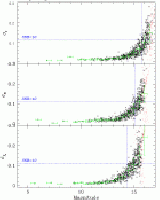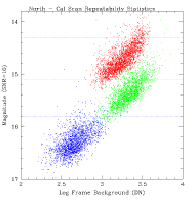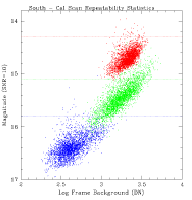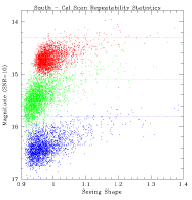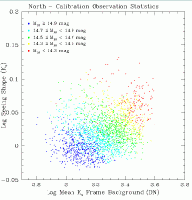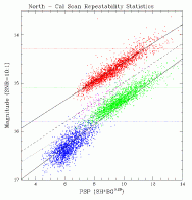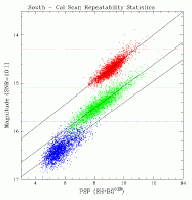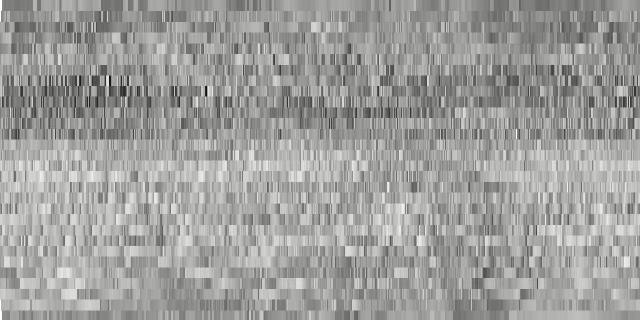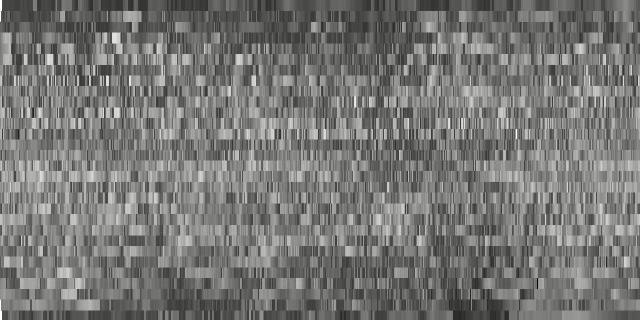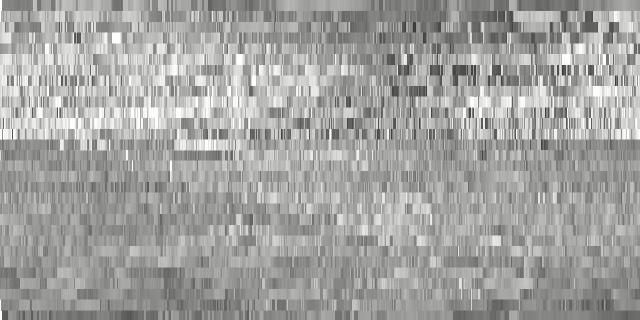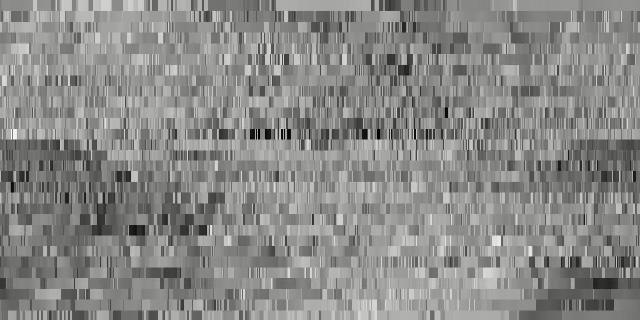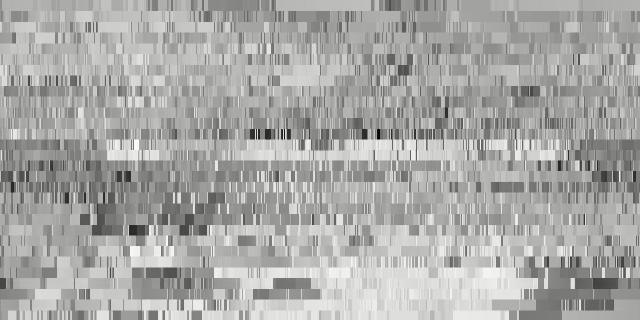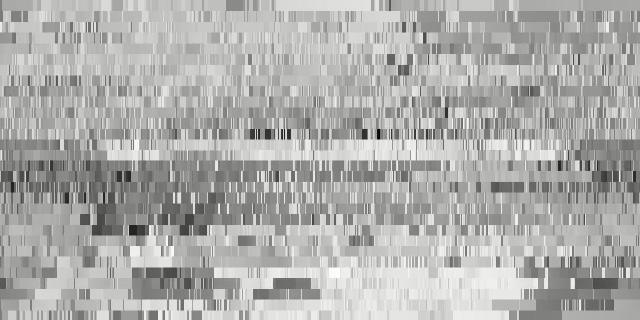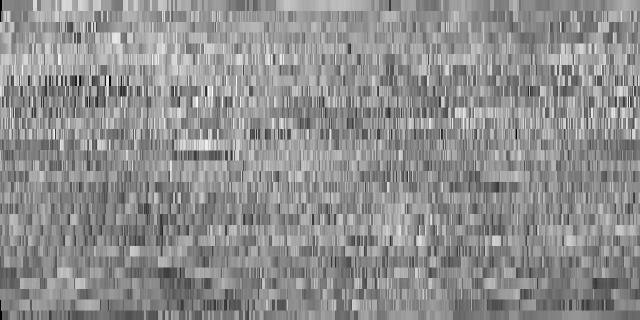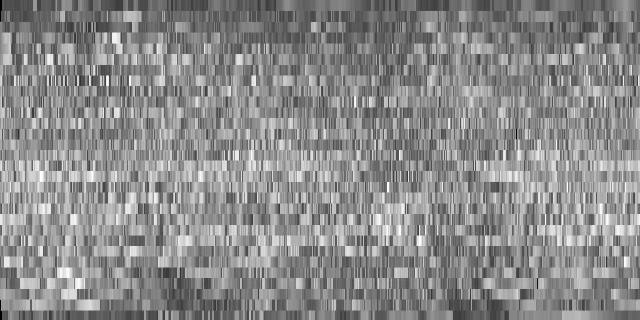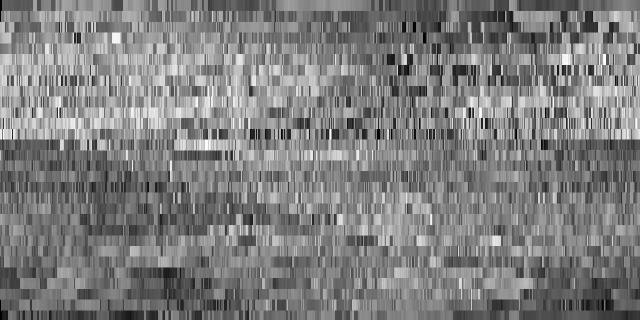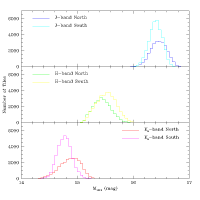ii. The Photometric Sensitivity Parameter (PSP)
Figures 2 and
3 show how the measured SNR=10 level,
M10,
varied with the mean sky background levels (BG), measured on
the individual calibration scan image frames in DN (digital numbers), for
the northern and southern observatories, respectively. In these and the
following figures, J-band data are shown in blue, H-band in green
and Ks-band in red.
For reference, the Survey requirement SNR=10 limits are shown for
each band by the horizontal lines in the appropriate colors.
The measured value of M10 is
generally proportional to BG1.5. This is the relationship
expected for Poisson statistics in sky-background-limited measurements:
SNR scales as BG-0.5.
Most of the calibration scan data taken during the Survey
satisfy the sensitivity requirements. However, most of the scans with
mean background levels above ~2500 DN are below the sensitivity
limits in H and Ks. Furthermore,
there is considerable vertical spread
in the M10 vs. BG distributions, and even
some lower background data have sensitivities below the requirements.
Some of this spread is caused intrinsic variations in the sky backgrounds
values, since the mean background over six calibration scans is shown.
However, most of the scatter arises because measurements at a
given background level were taken in a wide range of seeing conditions.
Figures 4 and
5 show M10 as a function
of the mean seeing shape parameter for all calibration
observations from Mt. Hopkins and CTIO, respectively. The
seeing shape parameter (SH) is an empirical characterization of the
point spread function (see IV.5a)
that is derived during scan data processing.
The shape is used to monitor the seeing as a function of time within a scan,
for the purpose of PSF selection for point source profile-fit photometry
(IV.4b) and for definition of
the stellar ridgelines for extended source star/galaxy discrimination
(IV.5a).
Shape is related to image full-width-at-half-maximum intensity (FWHM)
via the relation:
FWHM(´´) = 3.13*SH - 0.46
The achieved SNR for data in all bands from both observatories
shows an approximately linear dependence on seeing shape.
A much broader range of seeing conditions were encountered
at the Mt. Hopkins site than at CTIO, which is also illustrated by
the time-histories of the SH parameters from the two
observatories shown in Figure 2
of III.1.c.
Thus, the dependence of sensitivity on seeing is easier to
see in the northern data. However, the limited instances of poorer
seeing at Cerro Tololo do reveal the trends.
The interplay of seeing, sky backgrounds and photometric sensitivity
is illustrated in Figure 6 in which the
mean seeing shape for
northern Ks calibration observations is shown as a function
of the mean Ks frame backgrounds. The different
colors in this figure encode data with different ranges of measured
sensitivity, M10. Photometry made under conditions
with the best seeing and lowest backgrounds has the highest
sensitivity (i.e., largest value of M10).
Under the best conditions, SNR=10 was achieved at nearly Ks~15 mag.
The sensitivity degrades in a systematic fashion with
higher backgrounds and poorer image quality. While the mean
seeing and background levels for the Calibration observations
are not correlated overall, there is a well-defined relationship
between the seeing and background for data confined to a narrow range
in sensitivity. Fitting the value of shape as function of
background for successive, narrow intervals of M10
and averaging the slopes from each fit
established that SH is proportional to BG-0.29,
for fixed sensitivity.
Based on this relationship, a Photometric
Sensitivity Parameter (PSP) was defined that predicts
the magnitude at which SNR=10 for any value of mean seeing shape and
frame background within a 2MASS scan measurement. PSP is defined as:
PSP = SH*BG+0.29
The values of M10 for
all northern and southern calibration observations, respectively, are
shown plotted as a function of PSP in Figures
7 and 8.
Northern H-band data taken after 1999 August, when the H-band
detector array was replaced (III.1.b),
are shown by the magenta points in
Figure 7. They are offset from
the older H-band data because of the different sensitivity of
the two H-band detectors.
The linear relationships between M10
and PSP allowed predicting the achieved H and Ks
photometric sensitivity
of a scan taken under a given set of atmospheric background and
seeing conditions to within ~0.1 mag. The residual scatter about
the linear relationships is slightly larger in the J-band, ~0.2 mag,
because, under the lowest background conditions, 2MASS J-band data was only
marginally background-noise-limited. This prediction was
the basis for photometric sensitivity quality scoring assigned
to each Survey scan during the nightly
Quality Assurance process (IV.10.b).
The PSP values derived for each Tile in the All-Sky
Release are given in the j_psp,
h_psp, and
k_psp columns in the
Scan Information Table.
 J,H,Ks)
versus mean magnitude for each merged source in the field.
Black crosses represent sources detected at least five times in the
six scans, and the red points are sources
detected less than five times. Marked in green are the trimmed
average and RMS root variances for all stars detected
J,H,Ks)
versus mean magnitude for each merged source in the field.
Black crosses represent sources detected at least five times in the
six scans, and the red points are sources
detected less than five times. Marked in green are the trimmed
average and RMS root variances for all stars detected
 5 times in 0.5 magnitude-wide bins.
J, H and Ks repeatabilities are shown in the top, middle
and bottom panels, respectively. The dashed horizontal
lines in each panel show the SNR=10 level, the value where root variances are
10% of the brightness (0.1086 mag). For reference, the dashed blue vertical
lines show the magnitudes in each band for which the Survey
measurements are required to have a SNR
5 times in 0.5 magnitude-wide bins.
J, H and Ks repeatabilities are shown in the top, middle
and bottom panels, respectively. The dashed horizontal
lines in each panel show the SNR=10 level, the value where root variances are
10% of the brightness (0.1086 mag). For reference, the dashed blue vertical
lines show the magnitudes in each band for which the Survey
measurements are required to have a SNR 10.
10.
